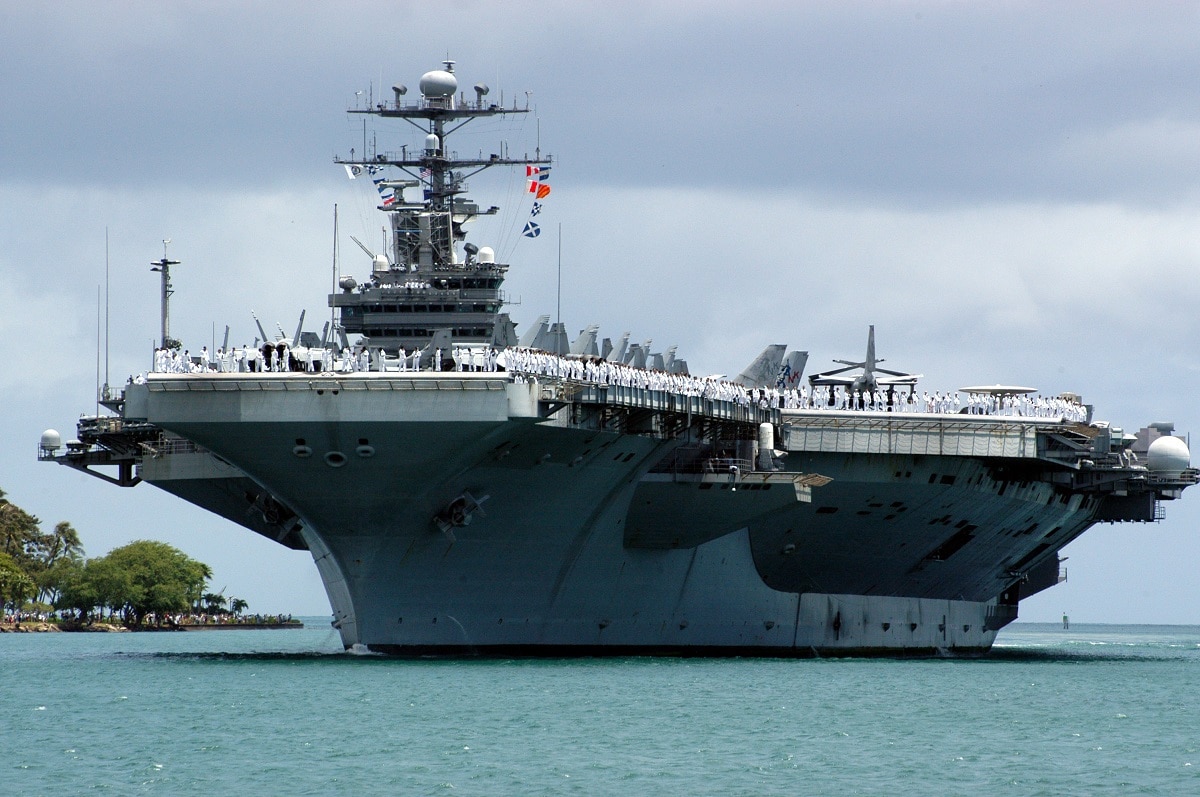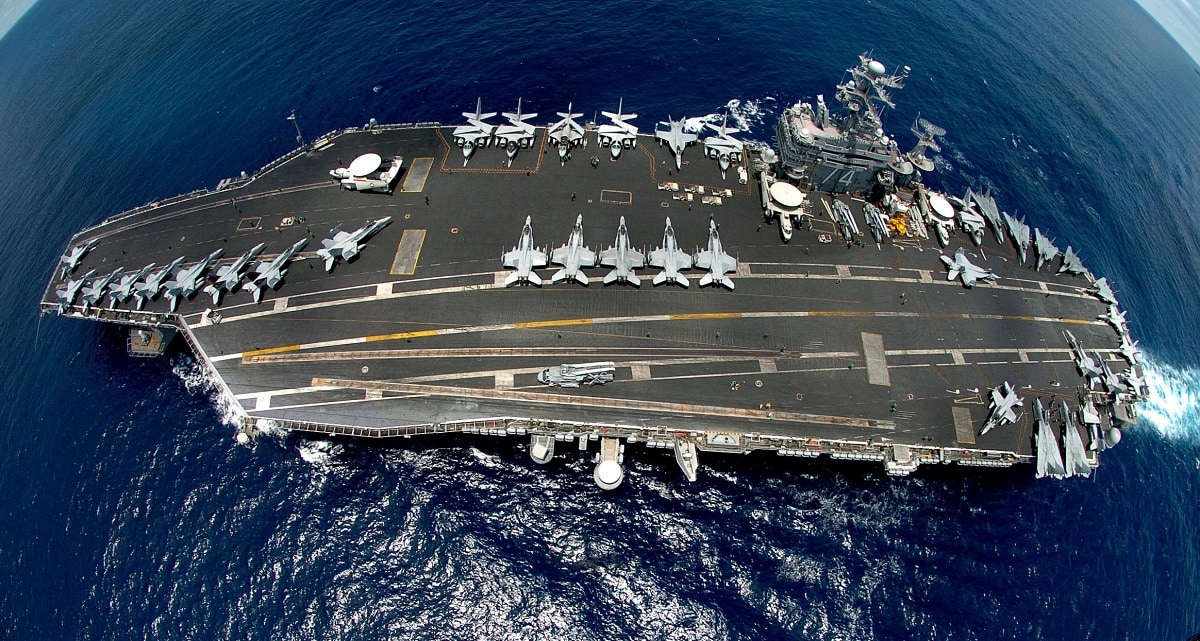“Look Ahead” is an apt motto for the Nimitz-class aircraft carrier USS John C. Stennis (CVN-74), as last week the Department of Defense (DoD) announced that the United States Navy has awarded Newport News-based Huntington Ingalls Industries’ (HII) Newport News Shipbuilding division a $2.99 billion contract to refuel and overhaul the supercarrier. The 1,092-foot long carrier will reenter service following the overhaul, which is scheduled to be completed in 2025. That will give the Navy something to Look Ahead to when the ship reenters service.
How to Reboot an Aircraft Carrier
“Our teams have spent three years preparing and planning for each step of the process along the way, and we look forward to continuing our work with our suppliers and Navy partners in anticipation of the ship’s arrival at Newport News,” Todd West, Newport News Shipbuilding’s vice president, in-service aircraft carrier programs, said in a statement.
The refueling and complex overhaul (RCOH) essentially marks the “half-way” point in a carrier’s lifecycle and includes about thirty-five percent of all maintenance and modernization of the carrier’s fifty-year service life. Work will reportedly include refueling the ship’s nuclear reactors, while work will be conducted on more than 2,300 components as well as the hundreds of tanks and systems.

PEARL HARBOR, Hawaii (June 29, 2004) Sailors aboard the Nimitz-class aircraft carrier USS John C. Stennis (CVN 74) Òman the railsÓ as she pulls through the mouth of Pearl Harbor. Stennis arrived as part of RIMPAC (Rim of the Pacific Maritime Exercises), which includes the participation of seven countries. The objectives of the exercises are enhancing combat readiness and exploiting opportunities for cooperation with multinational unties. U.S. Navy photo by Journalist Seaman Ryan C. McGinley. (RELEASED)
Plans for the RCOH began in 2018 when HII’s Newport News Shipbuilding received a $187 million contract to begin engineering-pre-overhaul inspections. That included the material purchase and fabrication work that would be significant for the overhaul.
Over the next five years, the flight deck will be removed, as well as most of the ship’s computer and combat systems. The overhaul will also see the renovation of the tanks and other spaces, while the most significant part of the process is the refueling of the warship’s two reactors. That is followed by a total reconstruction of USS John C. Stennis, giving the vessel a new lease on life.
The carrier will have some company at least into early next year, as another Nimitz-class aircraft carrier, USS George Washington (CVN-73), is also undergoing a similar conversion at the HII facility in Virginia. According to UPI, the two ships will be berthed side-by-side until work on the CVN-73 is completed. It had been planned to have USS George Washington back in service by late 2021, but the overhaul was delayed by the novel coronavirus pandemic. The yard and the U.S. Navy have agreed to prioritize work on existing ships and submarines, so the RCOH for CVN-74 could take longer than initially expected. HII is the nation’s largest military shipbuilding company, and it currently employs more than 42,000 people worldwide, but its workforce has been stretched thin in recent years.
Due to delays with the new Ford-class of carriers, the U.S. Navy has been considering an extension to the service lives of the aging Nimitz-class carriers.
Nicknamed “Johnny Reb,” CVN-74 was commissioned in December 1995 and named in honor of Democratic Senator John C. Stennis of Mississippi, who hadn’t lost an election in 60 years. The name, which was approved by then-President Ronald Reagan in 1988, has been the subject of controversy as Sen. Stennis was an outspoken critic of civil rights and racial equality. The nickname hasn’t also drawn its share of criticism in recent years.
However, it remains unlikely that the aircraft carrier would be renamed during its RCOH.
Peter Suciu is a Michigan-based writer who has contributed to more than four dozen magazines, newspapers and websites. He regularly writes about military small arms, and is the author of several books on military headgear including A Gallery of Military Headdress, which is available on Amazon.com.

